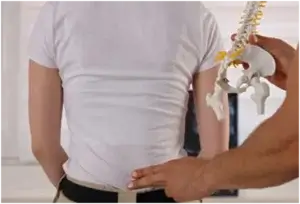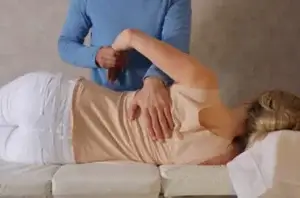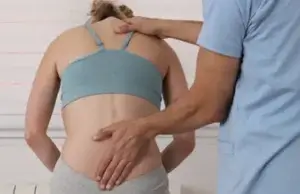 Spinal decompression therapy, is a non-surgical treatment designed to relieve pressure on the spinal cord, nerves, and discs. This innovative therapy targets various spinal conditions, including herniated discs, bulging discs, spinal stenosis, and degenerative disc disease. By creating negative pressure within the spinal discs, decompression therapy helps to alleviate pressure on the nerves, promoting healing and reducing pain. This treatment is particularly effective for chronic back pain, neck pain, and leg pain, offering a viable alternative to surgical spinal decompression. Patients often experience significant improvement in their symptoms, making it a popular choice for those seeking non-surgical pain relief.
Spinal decompression therapy, is a non-surgical treatment designed to relieve pressure on the spinal cord, nerves, and discs. This innovative therapy targets various spinal conditions, including herniated discs, bulging discs, spinal stenosis, and degenerative disc disease. By creating negative pressure within the spinal discs, decompression therapy helps to alleviate pressure on the nerves, promoting healing and reducing pain. This treatment is particularly effective for chronic back pain, neck pain, and leg pain, offering a viable alternative to surgical spinal decompression. Patients often experience significant improvement in their symptoms, making it a popular choice for those seeking non-surgical pain relief.
Non-Surgical Relief for Chronic Neck and Back Pain
 At Premiere Spine and Sport Medicine in Corona, CA, nonsurgical spinal decompression therapy offers a non-invasive solution for patients suffering from chronic neck, back, or disc-related pain. This advanced, computer-controlled treatment gently stretches the spine to relieve pressure on spinal discs and nerves—promoting healing, improving mobility, and reducing pain to relieve pain without the need for injections or surgery. It is particularly beneficial for patients experiencing persistent pain despite other treatments.
At Premiere Spine and Sport Medicine in Corona, CA, nonsurgical spinal decompression therapy offers a non-invasive solution for patients suffering from chronic neck, back, or disc-related pain. This advanced, computer-controlled treatment gently stretches the spine to relieve pressure on spinal discs and nerves—promoting healing, improving mobility, and reducing pain to relieve pain without the need for injections or surgery. It is particularly beneficial for patients experiencing persistent pain despite other treatments.
Whether caused by injury, aging, or degenerative conditions, spinal decompression helps restore spinal health and improve quality of life.
Benefits of Spinal Decompression Therapy
Spinal decompression is a safe and effective alternative to surgery for many spine-related conditions. Key benefitsinclude:
- Reduces and relieves pressure on spinal discs and nerves
- Alleviates pain in the back, neck, legs, and arms
- Enhancesspinalalignment and mobility
- Supports rehydration and healing of herniated or bulging discs
- Non-invasive and pain-free, with no downtime required
- Works well with other treatments such as chiropractic care, physical therapy, and massage
- Offers a shorter recovery time compared to surgical options
Who Can Benefit from Spinal Decompression?
Spinal decompression is ideal for:
- Adults experiencing persistent lower back or neck pain
- Patients dealing with disc herniations, herniated disks, bulging discs, or degenerative disc disease
- Individuals suffering from sciatica or radiating nerve pain
- Those with conditions like spinal stenosis, spinal compression, or facet joint syndrome
- People looking for non-surgical alternatives to spinal surgery or injections
By addressing the root cause of spinal issues, this therapy provides long-term relief.
Symptoms & Conditions Treated with Spinal Decompression
 Spinal decompression therapy can effectively treat and relieve symptoms:
Spinal decompression therapy can effectively treat and relieve symptoms:
- Spinal decompression treatment for herniated or bulging discs
- Degenerative disc disease
- Sciatica (radiating leg or buttock pain)
- Pinched nerves or nerve root compression
- Spinalstenosis
- Facetjointdysfunction
- Chronic back orneckstiffness
- Failed back surgery syndrome (in select cases)
By taking pressure off the spinal structures, this therapy promotes healing and reduces discomfort.
Understanding Nerve compression
 Nerve compression occurs when the spinal cord, nerves, or nerve roots are pinched or compressed, leading to symptoms such as pain, numbness, tingling, and weakness. This condition can result from various factors, including herniated discs, bulging discs, spinal stenosis, and the presence of osteophytes. Nerve compression can cause chronic pain, sciatica, and other debilitating conditions affecting the spinal column. Relieving pressure on the nerves is crucial for treating compressed nerves and maintaining spinal health. Effective treatments for nerve compression include decompression therapy, physical therapy, and chiropractic care, all of which aim to alleviate pain and promote healing.
Nerve compression occurs when the spinal cord, nerves, or nerve roots are pinched or compressed, leading to symptoms such as pain, numbness, tingling, and weakness. This condition can result from various factors, including herniated discs, bulging discs, spinal stenosis, and the presence of osteophytes. Nerve compression can cause chronic pain, sciatica, and other debilitating conditions affecting the spinal column. Relieving pressure on the nerves is crucial for treating compressed nerves and maintaining spinal health. Effective treatments for nerve compression include decompression therapy, physical therapy, and chiropractic care, all of which aim to alleviate pain and promote healing.
Alternative Treatments
In addition to spinal decompression therapy, several alternative treatments can help manage chronic back pain, neck pain, and leg pain. Chiropractic adjustments are a popular option, helping to improve spinal alignment and reduce nerve pressure. Physical therapy is another effective treatment, focusing on strengthening muscles, enhancing flexibility, and reducing pain. Cold therapy can be beneficial in reducing inflammation and providing pain relief. Nerve stimulation techniques, such as electrical tests, can block pain signals and promote healing. These alternative treatments can complement decompression therapy, offering a comprehensive approach to pain management and potentially avoiding invasive procedures like back surgery. Consulting with a healthcare provider is essential to determine the right treatment plan tailored to your specific condition and needs.
By following this structured approach, the new sections seamlessly integrate into the existing article, providing additional valuable information while maintaining consistency in tone and style.
What to Expect During the Spinal Decompression Process
 Initial Evaluation A full assessment is conducted by a provider, including a medical history review, spinal exam, and imaging if needed. This helps confirm if you’re a good candidate for spinal decompression therapy.
Initial Evaluation A full assessment is conducted by a provider, including a medical history review, spinal exam, and imaging if needed. This helps confirm if you’re a good candidate for spinal decompression therapy.- Custom Treatment Plan Based on your diagnosis, a treatment plan is created outlining the number of sessions and how spinal decompression will be integrated with other services like physical therapy, chiropractic care, or massage.
- Spinal Decompression Session During a spinal decompression session, patients lie on a specialized traction table where gentle, controlled traction forces are applied to the spine. This process creates negative pressure within the spinal discs, promoting healing and relieving pressure on nerves. The session is painless and typically lasts between 20 to 30 minutes, often leaving patients with reduced pain and improved mobility.
- Progress Monitoring & Continued Care A full treatment cycle may include just a few sessions to 12 to 20 sessions over several weeks. Progress is monitored closely and adjusted based on your response. Supportive therapies and home exercises are typically included for lasting results.
What Happens During a Spinal Decompression Session?
- Positioning: You’ll lie on a specialized decompression table, either face up or face down, depending on your condition. A comfortable harness is fitted around your lower back (or neck if receiving cervical decompression). The traction table applies controlled traction forces to alleviate pain and support spinal alignment.
- Controlled Traction: The computerized system gently stretches the spine in a slow, controlled manner. This creates negative pressure within the discs, allowing bulging material to retract and promoting fluid and nutrient exchange. This process also helps repair tissue damage by improving fluid circulation.
- Relaxation Phase: The machine cycles between decompression and relaxation phases, typically lasting 20 to 30 minutes. The process is painless, and many patients find it relaxing.
- Post-Treatment Guidance: After the session, light stretching or physical therapy may be recommended. Most patients walk away with less pain and greater mobility.
Key Takeaways
- Non-Surgical Pain Relief: Spinal decompression therapy offers a non-invasive alternative to surgery, effectively relieving pressure on spinal discs and nerves to alleviate chronic back, neck, and leg pain.
- Comprehensive Treatment Approach: This therapy can be combined with other treatments like chiropractic care, physical therapy, and cold therapy to enhance spinal health and promote healing.
- Patient-Centric Process: Each treatment plan is tailored to the individual’s condition, ensuring personalized care and significant improvement in symptoms, often in just a few sessions.

